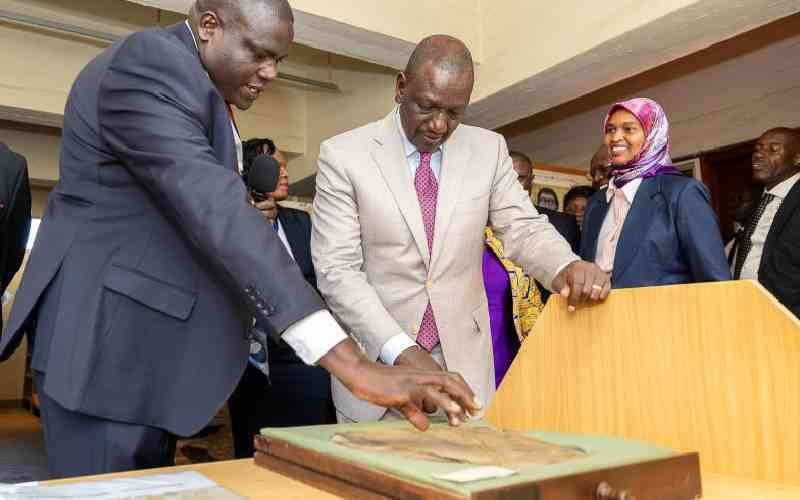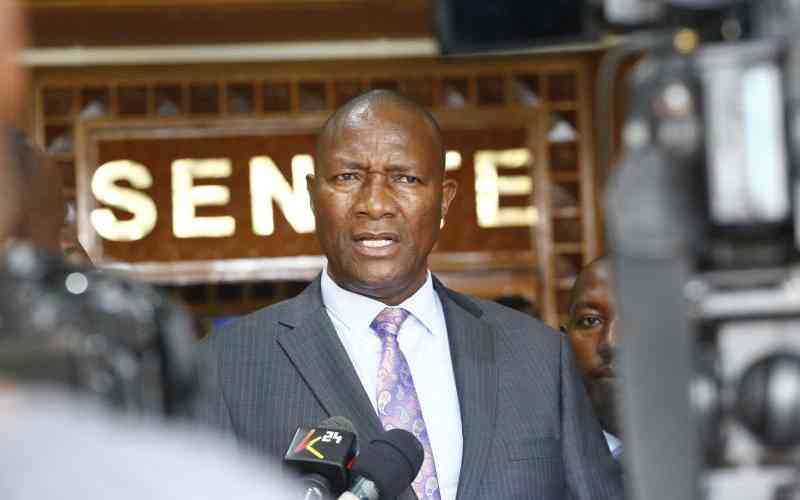As we mark the Youth Week and the lead up to the August 12 International Youth Day, a worrying fact is that the world is already one-third of the way towards the deadline of the Sustainable Development Goals, yet we are still far off track from many of them, including SDG 4 on education.
According to UNESCO, only six out of ten young people will be completing secondary education by 2030.
The theme of International Youth Day 2019 is making education more relevant, equitable and inclusive, yet Africa has the highest number of out-of-school children and four in ten of those in school are scoring poorly in literacy and numeracy.
Despite considerable gains in enrolment rates, there are still big challenges related to equity in access and relevance of school curricula for the current and future job markets.
With much discussion about rapid urbanisation, it is often lost on policy-makers that Kenya is still overwhelmingly rural and the specific needs about this segment of the population need to be given prominence.
One glaring weakness remains the opportunities for education between urban and rural families. Data indicates that in low-income countries, the richest are nine times as likely as the poorest to complete upper secondary.
In terms of location, 26 young people living in rural areas complete upper secondary school for every 100 young people living in urban areas who do so.
In countries such as Kenya, the national government maintains the responsibility to education, but county governments need to consider what opportunities lie in mobilising resources and capacity to support the education of youth in rural areas, in line with the ‘Leaving no one behind’ principle.
In the face of reduced development aid directed towards education, county governments should consider greater engagements with the private sector, especially to enhance marketable vocational and technical education.
This would provide a pathway to lifting rural youth out of poverty, by expanding opportunities for re-skilling and relevance for the market. Exploiting digital learning driven by private sector players would, for instance, make it possible to reach new and excluded learners and lower costs for rural families.
With the continent’s impressive mobile phone penetration, it is possible for instance to reach girls who fall out school either because they have children at a very young age or because of social norms that pressure them into early marriage. This is a very prevalent direct cause of generational poverty.
Impacting investing – using the tools of commercial capital deployment for social good, is a potential tool to support education access, equity, and quality. In the counties, it would mobilise new funding and promote innovation in teaching and learning methods.
For investors with an eye for sustainable social impact, the multiplier effect of education across a range of sectors, from health to livelihoods is already proven. For instance, one year of primary schooling boosts wages by five to 15 per-cent, while each year of secondary school increases wages by up to 25 per cent.
The involvement of the private sector is very crucial especially in rebranding TVET and making career options more appealing and meaningful. At the moment, such institutions are largely run by government ministries and are associated with failed careers.
Further to the recognition of Science, Technology, Engineering and Mathematics (STEM) Programme as the key vehicle to increase gender balance in engineering and science innovations.
Stay informed. Subscribe to our newsletter
Transforming education with an eye on preparing the youth for tomorrow’s competitive economies is the best way to deal with the fast-growing youth bulge. It is projected that in 15 years, the number of people joining the workforce will exceed that of the rest of the world combined.
This must be seen as an opportunity, rather than a threat. Young people, when fully participating in the workforce, can help alleviate some of the pressures on public coffers by contributing to a country’s productivity and tax revenues.
Getting all youth to have an education that confers skill require bold, disruptive thinking not just to mobilize more money for education but to ensure that the impact of investment in education is lasting.
 The Standard Group Plc is a
multi-media organization with investments in media platforms spanning newspaper
print operations, television, radio broadcasting, digital and online services. The
Standard Group is recognized as a leading multi-media house in Kenya with a key
influence in matters of national and international interest.
The Standard Group Plc is a
multi-media organization with investments in media platforms spanning newspaper
print operations, television, radio broadcasting, digital and online services. The
Standard Group is recognized as a leading multi-media house in Kenya with a key
influence in matters of national and international interest.
 The Standard Group Plc is a
multi-media organization with investments in media platforms spanning newspaper
print operations, television, radio broadcasting, digital and online services. The
Standard Group is recognized as a leading multi-media house in Kenya with a key
influence in matters of national and international interest.
The Standard Group Plc is a
multi-media organization with investments in media platforms spanning newspaper
print operations, television, radio broadcasting, digital and online services. The
Standard Group is recognized as a leading multi-media house in Kenya with a key
influence in matters of national and international interest.








